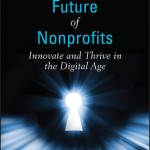This article is part one of a series that focuses on the participants perspective of an event fundraiser and how to improve participants’ experience with events, and increase overall event participation. It was originally published by Hilborn eNEWS, formerly Canadian Fundraising & Philanthropy.
Participants’ tips for race fundraising success, part one
By Heather Burton, Stacy Dyer, and Stacey Miller
We love to participate in charity races, walks and rides. They’re a great way for nonprofits to amplify their reach and raise money. They make us feel good, emotionally and physically. And these days, it’s a rare weekend when some sort of athletic charity event can’t be found. We’ve even stumbled across a “yoga-a-thon,” which is not a race, run, or ride, but still a pretty cool idea for summer athletes in the winter months!
In this two-part article, we’ll give you a sneak peek into the participants’ perspective, with key ways to turn avid event participants into not only yearly attendees, but also fans for your cause.
The Toronto People With AIDS Foundation holds its Friends For Life Bike Rally each year. Tim Ledger and Carmelo Millimaci, co-leaders of the event’s media and communications committee, say some of this year’s participants are returning for their 11th year.
“Returning riders and crew tell us that, aside from the cause, the reasons they return are the sense of community they find during the event, the truly lifelong friendships they have developed, the physical challenge, and the feeling of accomplishment they get from cycling or volunteering for the six-day journey from Toronto to Montreal,” says Millimaci.
One chance to make a first impression
All participants love a well-organized event. Tell us where to park on race day. Give us a map of the course and clearly mark the starting point. The way you manage your race, run, or walk is how we will perceive your charity, especially if this is our first experience with you.
From setting the course to counting down to the start, it’s never too early to begin planning. A few key areas on which to focus include the anticipated number of participants, cost of the packets, advertising, weather conditions, and technology considerations for registration, communication, and tracking runner, walker, and rider times.
Timing
Spring and fall are considered race seasons. The weather and the desire to be outdoors make these the most comfortable and largest attended races. Open registration early, especially if you’re asking us to fundraise on your behalf. Four months isn’t too early to open registration. In fact, some participants prefer a six-month registration window. We need to get your message out to our networks, so give us time to do that. Consider this: What lead time would you need to ensure participants have the best possible registration experience?
A considerable number of runs, walks, and rides are held on Saturday mornings. If you set yourself apart by holding your event on Friday or Saturday evening, you give us the option to participate in multiple events. Remember to look at all types of events, including cycling, swimming, and triathlons, because cross-endurance activities are common. Check with your local run and cycle shops as they usually keep an active events calendar.
Location, location, location
Courses are a key component of any successful run, walk, or ride event. Great courses offer a challenge for a variety of fitness levels, good terrain, and nice scenery. Many participants will use your well-planned and enjoyable course to train for your event, so consider accessibility, traffic patterns, and overall appeal of your planned course. The best course routes are not only convenient, but also a pleasure to run, walk, or ride anytime – not just during race day.
Consider family participation
Give us a reason to make your race a “family affair.” If your charity can arrange it, cast a wide net by offering multiple events within one, such as a 5K, a 10K, and a Kids K. Doing this can get tricky, but having various distance challenges allows participants to market your event to multiple audiences to help increase participation and encourage family engagement with your cause. Arrange all the different courses to have the same start and finish line, so supporters who are not racing can cheer on all of the participants from one location.
Measure accurately
For avid racers, it’s frustrating to run or ride a course feeling like your time is incredibly slow or thinking this is your fastest race ever. Accuracy of the course distance is crucial. Please don’t use a car odometer because you’ll only be accurate within 1/10 to 2/10 of the stated distance. The most common way to accurately measure the course is with a Jones-Oerth counter attached to the front wheel of a bicycle. Better yet, get your course certified by Athletics Canada / Run Canada.
Course certification is great for garnering the attention of serious, competitive athletes in your community. It can also help raise the profile of your event in local media, increase participation, and raise more awareness for your cause. Participants like to check times from race to race, so knowing that your course is accurate helps us improve our fitness levels, as well as advocate for your particular event.
Invisible but vital details
Finally, pay attention to elevation gain, traffic, road conditions, and any other factors that could make participating in your event strenuous for the less physically able. Remember, you’re not only catering to athletes, but also the general public and your current constituency. You may also benefit from contacting a local running or walking club for suggestions of routes that may fit your participants’ ability levels.
Millimaci adds, “Our bike rally is attractive to participants for many reasons – for fitness, for charity, for the love of community and friendship, and to make a positive difference in the lives of others.”
In our next article, we’ll talk about choosing technology, marketing, and a few essentials for event day. Happy planning!
Please read part two of the series.
Heather Burton, product marketing director for Sage North America‘s Nonprofit Solutions business, has been involved in the nonprofit sector for more than a decade.
Stacy Dyer is a product marketing manager for Sage’s Austin-based Nonprofit Solutions business. She has worked and volunteered with nonprofits for more than 15 years.
With more than 20 years of experience in market management and marketing communications for both nonprofits and for-profits, Stacey Miller serves as a consultant to Sage Nonprofit Solutions.
-Stacy







